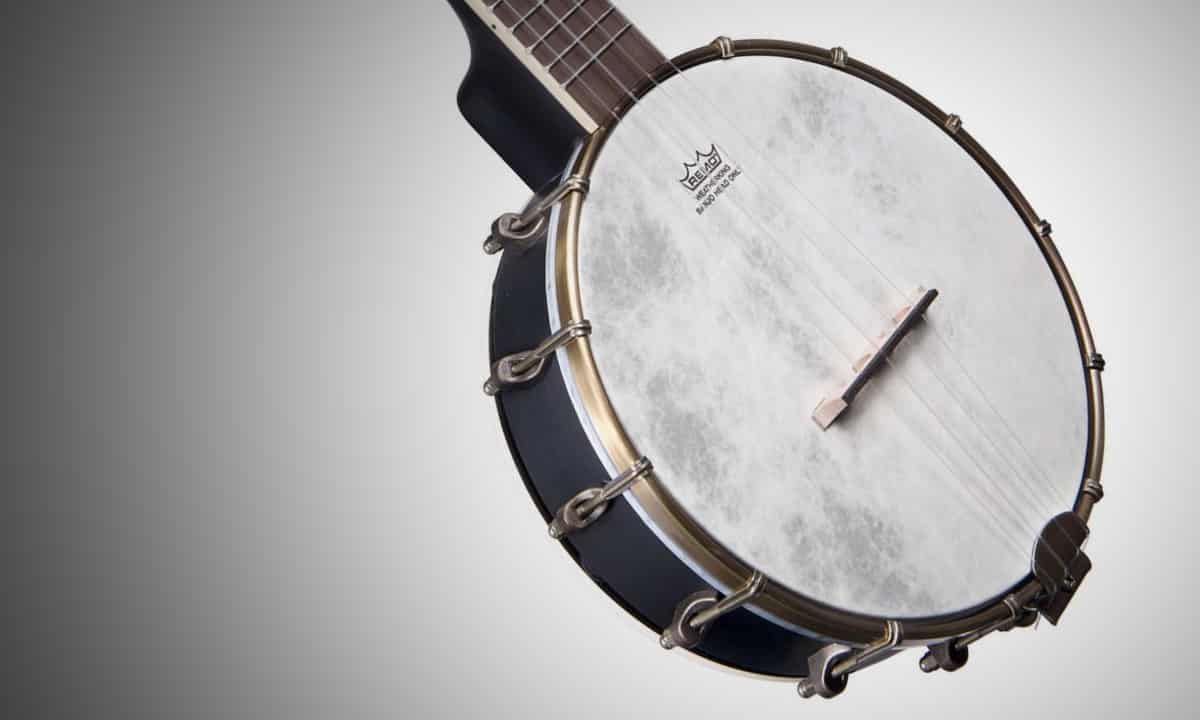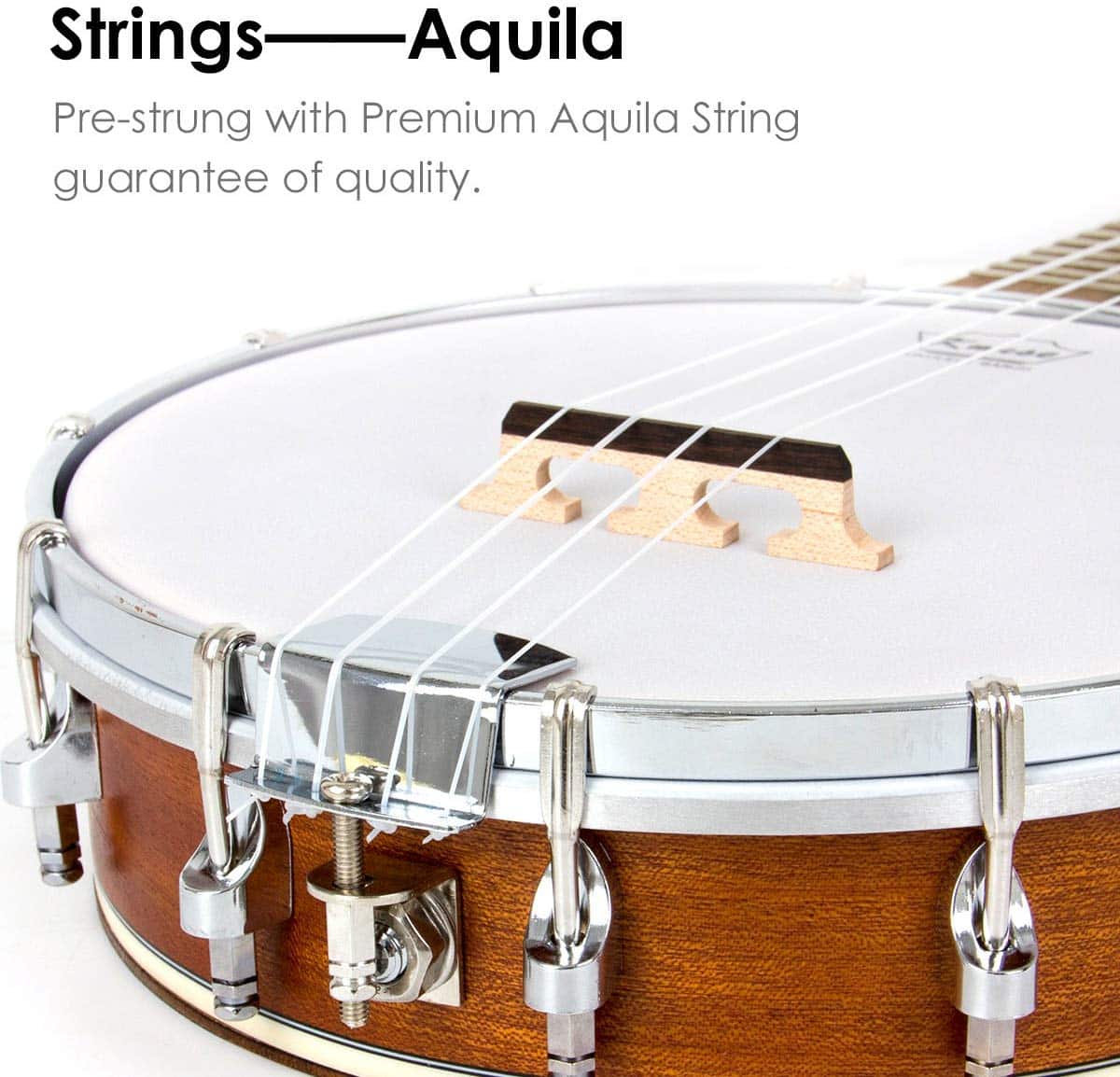
Slide your finger to the fourth fret of this string and you’ll land on E. It might sound complicated, but basically, you’re just ensuring the E string’s G is in unison with the bottom G string. Pluck a G on this string (third fret) and rotate its peg until the G sounds identical to the bottom G string. The E string is then tuned the opposite way. Their pitches should match perfectly, so keep loosening or tightening the A string until it does. Play an A on the G string (the second fret) and use this note as a mirror for the top A string. Once they both ring out with precise sonic alignment, you’re good to move onto the other strings.

Adjust the G string until it sounds the same pitch as the note played on either your piano, fork, or pipe.

Let’s assume we’re going by standard tuning (gCEA). What you do need though, is a good ear, as your tuning will depend on it. You can tune all the strings this way or you might find it easier to tune a single string and use it as the basis for the other pitches. The chromatic tuner is perfect for uke players who are just starting out, but some musicians require the ease and convenience of tuning up in a self-sufficient way.Ī piano, tuning fork, or pitch pipe will all do the job and allow you to tune your instrument by the power of listening. You’ll have that extra assurance that you’re in tune, rather than relying on your own judgment, which makes it a reliable tuning method for beginners. Something like the Boss TU-02 Chromatic Clip-on Tuner will suffice, as it is meant for a range of string instruments, including both guitar and ukulele.Įxceptional accuracy is granted by a chromatic tuner, and it’s quick to use too. If you play the guitarlele, the same method of tuning still stands, however you will need a guitar tuner rather than a ukulele tuner which is meant for four strings. Don’t forget to check that you’re rotating the right peg, you don’t want to be adjusting the wrong string! Similarly, if the tuner says it’s Ab or anything lower, then you know to tighten the string, making the pitch gradually higher. For example, say you’re tuning the top A string (the thinnest, highest string), if the meter is signalling the note as being Bb, B, or anything higher, then you know to loosen the string, gradually dropping it in pitch until it lands on A. The benefit of a chromatic tuner is that you can see just how accurate your tuning is. Once you’ve switched the tuner on, all you need to do is turn the tuning pegs according to the LED meter, which will tell you if the note is too sharp or flat. Take the Korg HeadTune Clip-On Tuner for example, a specific ukulele tuner, it features a uniquely sculpted shape that fits perfectly to the compact headstock a uke. One of the easiest, most common ways to tune your ukulele is with an electric tuner. Particularly handy for when you’re performing, a clip-on tuner attaches to the headstock of your uke and allows for quick, easy adjustments. Bass ukes are then tuned two and half octaves lower, at EADG, which is the same as a typical bass guitar.

Guitarlele tuning features standard uke tuning on the top four strings – GCEA – with the addition of the bottom two strings tuned AD. Speaking of guitars, for musicians who enjoy the hybrid nature of a guitarlele, your tuning isn’t a whole lot different. Baritones are typically tuned DGBE and are not re-entrant, meaning the strings actually do go from low to high. The two outer strings are usually played at higher pitches on a uke, as opposed to a linear progression from low to high as seen on standard guitar tuning.īaritone ukulele tuning, however, is an exception to this.

If you’re a guitarist wanting to explore the beauty of the uke, having a higher note on the bottom string might seem strange. Standard tuning is gCEA, and this goes for soprano, concert, tenor, and even the banjolele.Ī lower-case ‘g’ refers to re-entrant ¬tuning, which means its pitch resides in high G. Ukuleles come in all different shapes and sizes, and some of them need to be tuned differently. Different tunings for different instrumentsįirst thing’s first, know what you’re aiming for.


 0 kommentar(er)
0 kommentar(er)
